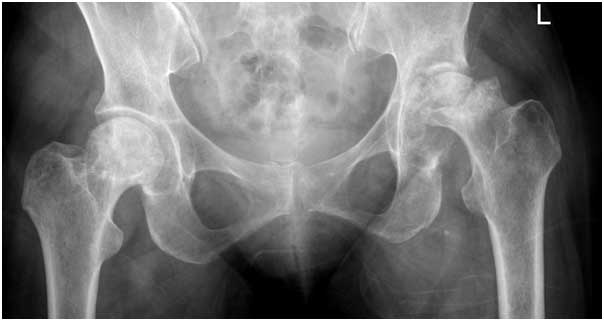Avascular necrosis (or Osteonecrosis) of the hip occurs where the blood supply of the hip is interrupted. Interestingly this usually starts with the tiny blood vessels within the femoral head (the ball of the hip joint) which become blocked and prevent the blood carrying nutrients and oxygen from reaching the bone. The result is that the bone becomes weak and gradually collapses. This in turn leads to destruction of the joint and Hip Arthritis.
CAUSES OF HIP AVASCULAR NECROSIS
There are a number of different reasons a patient may get avascular necrosis of the hip and these include conditions that damage the hip joint themselves such as hip fractures and Radiation damage (due to radiotherapy) and those conditions that affect the whole body but also lead to damage to the blood supply of the hip such as alcohol excess, high dose steroids, sickle cell disease, leukaemia, caisson’s disease to name a few. In some cases of avascular necrosis no cause is found and doctors usually refer to these as “idiopathic”.
TREATMENT OF HIP AVASCULAR NECROSIS
A large number of treatments have been described for avascular necrosis of the hip and these include use of bisphosphonates (drugs thought to prevent progression of collapse of the femoral head), femoral osteotomy (breaking the femur to realign the joint surface), core decompression, curettage and bone grafting, free fibula transfer (to restore blood supply to the hip), hip arthrodesis (fusing the hip in one position), and total hip replacement.
In practice many of these treatments have yielded unpredictable results and this coupled with the evolution of better bearing technologyand improved survival of artificial hip joints means that total hip replacement is the treatment of choice in the majority of cases based on a tailored assessment by your surgeon.
PATIENT X-RAYS

Patient presenting avascular necrosis









